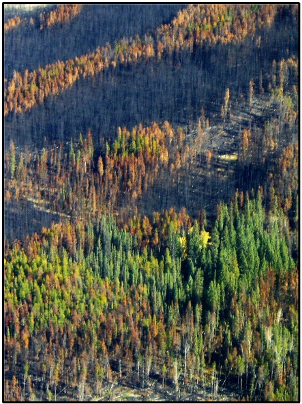Understanding Variation in Wildfire Burn Severity to Improve Fire Resilience: A Research Update and Prognosis

Phil Burton is an Emeritus Professor with the Department of Ecosystem Science & Management at the University of Northern British Columbia. His research has addressed vegetation dynamics and their implications to land and resource management, with a focus on disturbance effects and recovery.
and their implications to land and resource management, with a focus on disturbance effects and recovery.
Recent years have seen record areas of forest burned by wildfires in British Columbia and beyond. Although news reports and fire perimeter maps may give the impression that all of the affected forest is “destroyed,” in fact there is considerable variation in burn severity in most wildfires. Naturally characterized by a mixed-severity fire regime that interacts with insect outbreaks, central BC wildfires leave a wide array of unburned and low-severity patches with largely intact forest canopies remaining in both managed and unmanaged forests.
To better understand the reasons for that variation, Dr. Burton and collaborators employed remote sensing analysis and ground-based burn severity assessment of large 2018 wildfires, microclimate and fuel moisture monitoring, and stochastic simulation modelling. Although the effects of drought and day-to-day fire weather (particularly wind) are strong, some differences in stand age, structure, and composition evidently can reduce the likelihood of crown fire, and may be marginally useful in proactive landscape planning to enhance fire resistance.

